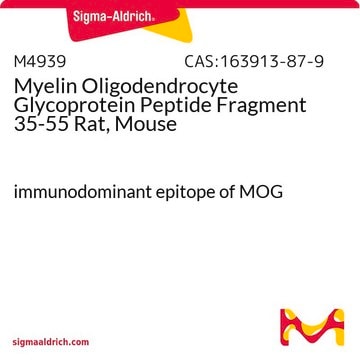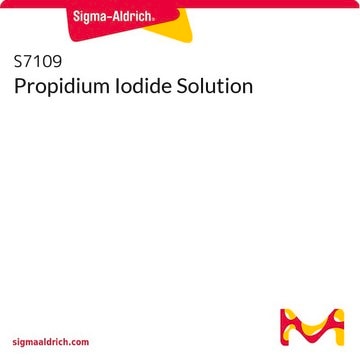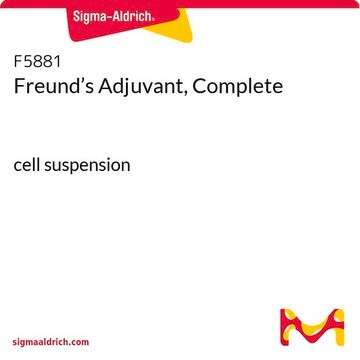Propidium iodide is soluble in water at a concentration of 1 mg/mL.
P4170
Propidium iodide
≥94.0% (HPLC)
Synonym(s):
3,8-Diamino-5-[3-(diethylmethylammonio)propyl]-6-phenylphenanthridinium diiodide
Select a Size
Select a Size
About This Item
Recommended Products
Quality Level
Assay
≥94.0% (HPLC)
form
powder
mp
220-225 °C (dec.) (lit.)
storage temp.
2-8°C
SMILES string
[I-].[I-].CC[N+](C)(CC)CCC[n+]1c(-c2ccccc2)c3cc(N)ccc3c4ccc(N)cc14
InChI
1S/C27H33N4.2HI/c1-4-31(3,5-2)17-9-16-30-26-19-22(29)13-15-24(26)23-14-12-21(28)18-25(23)27(30)20-10-7-6-8-11-20;;/h6-8,10-15,18-19,29H,4-5,9,16-17,28H2,1-3H3;2*1H/q+1;;/p-1
InChI key
XJMOSONTPMZWPB-UHFFFAOYSA-M
Looking for similar products? Visit Product Comparison Guide
General description
Application
Features and Benefits
Signal Word
Warning
Hazard Statements
Precautionary Statements
Hazard Classifications
Muta. 2
Storage Class Code
11 - Combustible Solids
WGK
WGK 3
Flash Point(F)
Not applicable
Flash Point(C)
Not applicable
Personal Protective Equipment
Choose from one of the most recent versions:
Already Own This Product?
Find documentation for the products that you have recently purchased in the Document Library.
Customers Also Viewed
Articles
Cell cycle phases (G1, S, G2, M) regulate cell growth, DNA replication, and division in proliferating cells.
Apoptosis regulation involves multiple pathways and molecules for cellular homeostasis.
Related Content
Nancy-520 for DNA Detection and Quantitation
-
What is the procedure for dissolving this product?
1 answer-
Helpful?
-
-
Is it necessary to carry out an RNase treatment before staining with propidium iodide in my immunofluorescence assay on insect tissue fixed in 4% paraformaldehyde? Additionally, is there the complete staining protocol for propidium iodide in immunofluorescence using a confocal microscope?
1 answer-
The product has not been validated for immunofluorescence assay in our laboratory to establish a reference protocol. In cases where propidium iodide binds to both DNA and RNA, the use of RNase is common to differentiate DNA staining from undesired RNA staining. For an application protocol, one may refer to a citation of this product in an immunofluorescence assay that utilizes RNase to visualize DNA-specific staining. The citation is as follows: J Cancer. 2020 Mar 5;11(11):3274-3287. The article discusses the dual role of BI 2536, a small-molecule inhibitor targeting PLK1, in inducing apoptosis and attenuating autophagy in neuroblastoma cells. The PMID for the article is 32231733.
Helpful?
-
-
Is this reagent suited for viability assays at FACS?
1 answer-
While this product is not tested for any specific application, propidium iodide is commonly used in cell-based assays such as FACS. Please see the link below to review publications detailing the use of this item in flow cytometry:
https://scholar.google.com/scholar?hl=en&as_sdt=0%2C22&q=%22p4170%22+flow+cytometry&btnG=Helpful?
-
-
What is the method to dissolve this product?
1 answer-
Propidium iodide can be dissolved in water at a concentration of 1 mg/mL. Please see the sample Certificate of Analysis for solubility information: https://www.sigmaaldrich.com/certificates/sapfs/PROD/sap/certificate_pdfs/COFA/Q14/P4170-BULKWXBF1544V.pdf
Helpful?
-
Active Filters
Our team of scientists has experience in all areas of research including Life Science, Material Science, Chemical Synthesis, Chromatography, Analytical and many others.
Contact Technical Service












